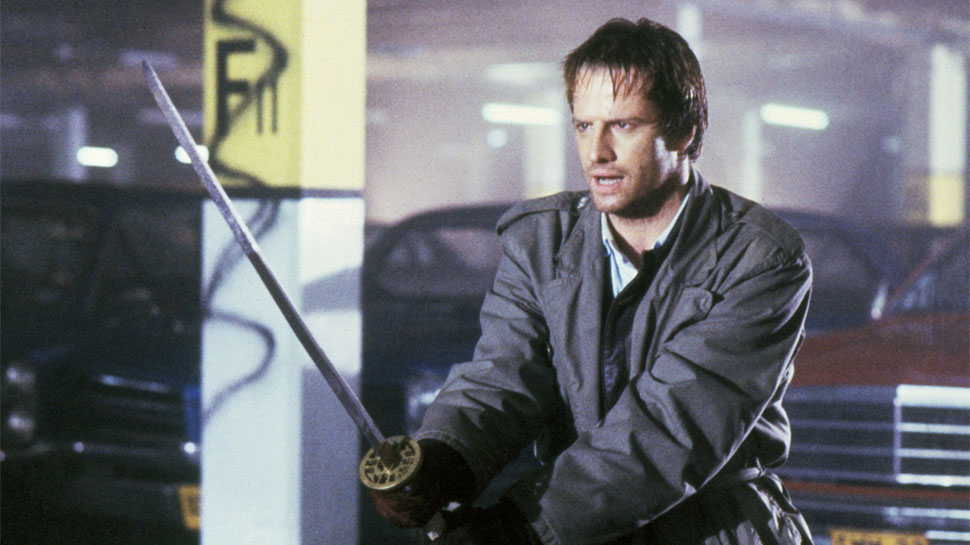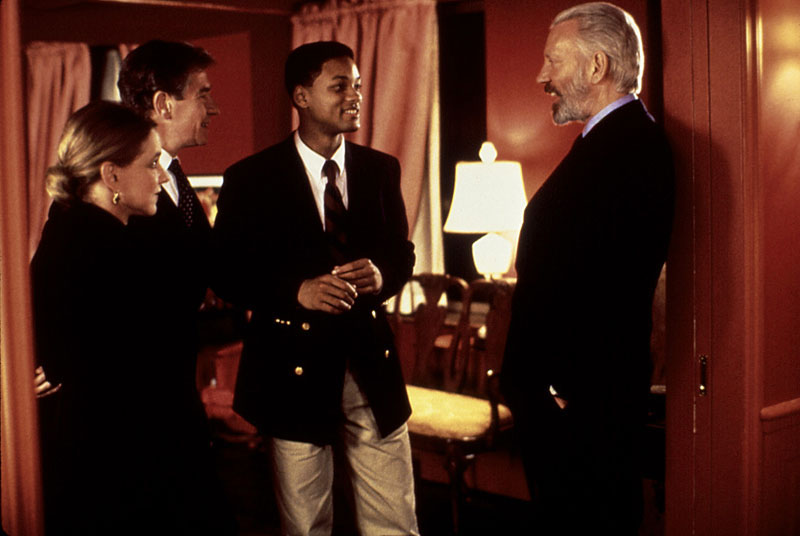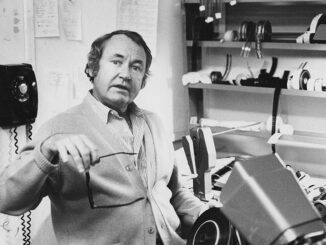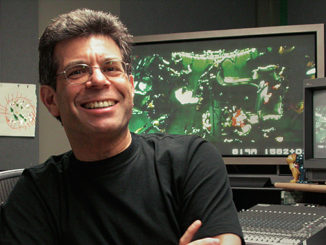
Film editors Frank Urioste and Peter Honess met as assistants on The Dirty Dozen in 1966; Honess taught Urioste about the English slating system, and Urioste taught Honess how to use a butt splicer. Honess went on to edit such films as L.A. Confidential, The Fast and the Furious and his current project, Domestic Disturbance. Urioste, after editing RoboCop, Total Recall, Basic Instinct and many other pictures, has become a senior vice president of feature development at Warner Bros. In this continuation of last issue’s conversation, the two friends talk about the movies most pivotal to their careers, the evolution of filmmaking and working in the executive suite.
Frank Urioste: Are there any directors who really influenced you?
Peter Honess: There are a couple. One is John Schlesinger, who I’ve done four films for, and another is Russell Mulcahy, who I also cut four films for, including Highlander. I consider both John and Russell to be very good editors. We tend to forget that directors have to be editors too, because they’re part of the process in the cutting room.
Urioste: The older directors, they made our job such a pleasure. You always got good material, and you were just looking for stuff that was better. I worked with Robert Aldrich, Vincente Minnelli and Billy Wilder. With Billy, we used to get 500 feet of dailies a day, and that was it. It would be four pages of dialog and just three or four cuts and, boom, the scene was together.
Honess: The actors knew their lines, and they said them in long takes. If you watch a film now that was made maybe in the 1930s or the 1940s, the dialogue crackles along. They did it with writing and performance. Actors didn’t slow down, thinking about what they were going to say. We now have to compensate for that and create pacing in the cutting room.
“The difference between action, comedy and drama is rhythm, that’s all.” – Frank Urioste
Urioste: When you have young directors with experienced actors, the director’s point of view can get lost. That’s a shame, and it hurts us. I remember years ago, you would get a master of the scene, and that would be the pace that you used when you put your first cut together. Nowadays you’re lucky to get a master.
Honess: Then you have to inject the rhythm. But it’s just a different approach. Not necessarily a bad thing.
Urioste: Since the 1970s and 80s, editors have made or broken so many films, because they have to help these young directors that I call shooters. They shoot, but you put it together. Directors used to have it all planned out. Now they can do anything they want.
Honess: Frank, you’ve done some pictures where you must have had the most film ever, millions of feet of film. I don’t know how you coped with that.
Urioste: I’ve always said this — I didn’t care how much they shot, as long as they gave you the time to look at it. They can shoot these monstrous films today and have a schedule that is so crazy that it’s actually impossible to scan everything, even with an Avid. You don’t even have time to look at it.
Honess: It’s sad, because there are overlooked gems buried in the outtakes. If there’s time, I like to go through everything again after it’s cut, just for me, because you might find one thing in there you’ve missed. You might find a dozen.
Urioste: It’s nice to be able to have time to review, relax and make it absolutely as good as you can.
Honess: The expectation is that because we have electronic Moviolas, we need less time in the cutting room. But often the opposite is true. Many of the films I’ve done digitally needed more time, not less.

Urioste: Because you can make 15 versions of the same thing and hang on to them. On film, you went with your gut and with whatever the director felt, too. You had to go with your first instincts, which are almost always right.
Honess: We preview the stuff a lot more now, because we can. Or somebody at the studio will have a suggestion, because they know it’s easy to try. People used to make up their minds more quickly. It’s fine, but they need to give us the time to go through that process. I would find it hard to go back to cutting on film.
Urioste: I haven’t cut a show in a few years, but I would enjoy cutting again on an Avid. If something I like comes along and if the studio agrees, my deal is that I can still cut a show. I think I could extend my career quite a ways if I wanted, but I love what I’m doing at Warner Bros. They have been really fantastic to me, and as long as they want me, I’m staying.
Honess: How much of the production process are you involved with?
Urioste: I’m a part of everything. I get all the new scripts, I go to the production meetings, I go to the creative meetings and if I have something to say, I say it. When I took the job, I said I would really like to be involved in the other parts of the process.
Honess: And you probably have the support of the editors who come to your studio. It must be fun for them knowing that someone with your skills is there.
Urioste: I tell them, “Look, it wasn’t that long ago that I was sitting on your side of the table. I know what you’re thinking.” And to the young directors, I say, “I have a win-win situation. If you want to do what I want to do, that’s great. But if you don’t, when the studio sees it and they don’t like it, I’ll just tell them that you didn’t want to do what I suggested.”
Honess: You can’t go wrong.
Urioste: You and I went through a training process to get where we are. But for a lot of young editors today, there is nobody to train them. You can’t get it in school, because it isn’t the same as when the film costs 60 or 70 million dollars. There’s a lot of pressure.
“There are overlooked gems buried in the outtakes.” – Peter Honess
Honess: Young editors also have to learn how to deal with diplomatic and political problems. Producers and actors are very important nowadays. It’s actually much tougher, because the hierarchy is not so well-defined. There are more people from the studio involved in making a film. And if you don’t deal well with the studio and the producers, they’re not gonna invite you back.
I can get very defensive about the cuts that the director and I had decided upon. The studio would come with notes, and I used to find it very difficult to deal with, until one director said to me, “Peter, calm down. The studios are paying for the movie. They have an absolute right to have an opinion on it. You and I might disagree with that opinion, but we have to look at it.” That was very educational for me. Directors have to compromise every day, something that we rarely have to do while putting a film together. It only happens to us near the end of our process, when the studio and the producers, writers and actors get involved in our work. That’s when we have to compromise, and it can be tough for an editor.
Urioste: The good editors of today and yesterday are involved in almost every facet of the film-making process. At MGM, when you would apprentice, you would learn all the different areas. That helped make those guys great. Today, a lot of editors have no idea about putting a score into a musical, or they don’t understand about sound. And because of the influence of television and MTV, the cutting is very fast. You don’t cut just because you haven’t made a cut in a while. That’s something that’s very hard to teach today.
Honess: A lot of films are far too choppy, and part of the problem is you’re looking at it on a monitor.
Urioste: When you look at the cuts frame by frame you say, “Oh, my God, this doesn’t match.” But when a show runs on the big screen, it can look very different. The small things disappear.
Honess: The key thing we should all have up in front of us is timing. I remember someone asking me the three most important things about film editing, and the answer is: timing, timing and timing.

Urioste: The difference between action, comedy and drama is rhythm, that’s all. When you look at a movie, if you don’t see the editing, you know you’re involved in the movie.
Unless it’s something that’s done for shock value, you should not see it. I watched the chariot race in Ben-Hur 75 times when I was a kid — I was an assistant at MGM, and every time they made a pass, I would go over to the dubbing stage and watch. In those days, there was no back and forth projection. They had to go straight through, so I was always able to see the whole thing. I still have it at home, still look at it once in a while. And you don’t see the cuts. You get so involved in the scene you miss all that stuff. I think it’s the greatest action sequence that’s ever been assembled. Nothing comes close. It took Ralph three or four months to get a first assembly together.
Honess: Good Lord.
Urioste: And there was no process, nothing fake, no blue screens.
Honess: We had a lot of visual effects on The Fast and the Furious, and I enjoyed it a lot. These things change constantly — on every film we do, things have developed to make the effects easier and better. In The Fast and the Furious, there was one car chase that was all visual effects — the whole thing — and it was fascinating to cut. I photographed the storyboards with a digital camera and put them in the Avid. Then every time I got a blue screen shot, I would add it. I had a very good visual effects editor — an important ingredient, because it’s very tedious, putting these elements together in the Avid. It takes a long time and it’s useful to have someone else doing it. The visual effects editors just present us with the shot so we can cut it in. I wouldn’t go near a visual effects film without one. They have to be able to listen to the editor, listen to the director and work with the visual effects houses. I’m a big admirer of the skills they have. Thinking back, Frank, are there any of your movies that especially stand out, either because they were challenging, or because they took your career to a new level?
Urioste: I think Die Hard was the most challenging, even though it might not look it, because of timing and tempo and pacing, and because 90% of it was inside that building. We had to make sure you weren’t in the same area for too long. And we had to keep it interesting and have the humor, and then break out in the last ten minutes or so. But Basic Instinct was the hardest movie I ever had to put together. That’s because of all those dialogue scenes, and making them really interesting and sleek and smooth. It seems like on every movie, I always learned something new. I’ve made cuts that were mistakes that looked sensational, and everybody thinks I did it on purpose. I was having a problem with a scene once and accidentally took the whole middle of it out. And all of a sudden, it worked.
Honess: Press the wrong button nowadays, and something magical might happen.
“You don’t cut just because you haven’t made a cut in a while. That’s something that’s very hard to teach today.” – Frank Urioste
Urioste: You asked about films that changed my career. Midway was really a help and shot me off to do big movies, but I was still struggling. Then in 1985, I got RoboCop with Paul Verhoeven. I didn’t do anything different than I had been doing, except maybe have better film from Paul, and I got an Academy Award nomination. All of a sudden, bam, I was a genius. Same guy, same style, but then I got all these movies. I got five great films in a row. It just kept going, boom boom boom.
Honess: L.A. Confidential was obviously very important to me, because it put me onto a platform I didn’t think I’d ever reach, which was the Academy Award nomination. That was a great treat. Another important film for me was Highlander, where I first met Russell Mulcahy. Russell had come from shooting videos — this was his second feature. The first film he made was about a monster pig in Australia called Razorback.. I went to see it before he hired me, and I was so taken by the picture, it was so bizarre. Russell helped me to throw away the rulebook that I had grown up with. The film was very difficult because there were about four units shooting all the time, and there was a massive amount of film. They had one kid coding — that’s all he did for 14 or 15 hours a day. I said, “What are all those rolls of film over there?” and he said, “Those are the 76 rolls I haven’t got to yet. That’s your scene for tomorrow.” It helped me control my panic and fear of film. If you’re going to be intimidated by the 100,000 feet coming your way for a two-minute battle scene, then you’re in the wrong business.
Urioste: People think they know editing, because it seems like such an easy thing. All you do is go from this scene to that. But it’s so much more, and unless you’ve done it you don’t understand it. People say, “You’re an editor. You splice the film together.” I just let it go. How can I explain it to them?
Honess: What I say now is I cut the best stuff out and leave it on the floor.

Urioste: Directors ask me, “Is that the best take?” and my favorite answer is, “No, I try to look for the worst one. Why would I want to use the best?”
Honess: Frank, it’s so cool to have you as a friend. We have a bond going back so long. It’s very unusual in my life and we always have great fun with it.
Urioste: I think it’s because we met when we were so young. I always respected you, and you’ve been my friend whether I was up or down — when I was doing everything I could to make a living, and then when things turned around for me, you were still the same guy.
Honess: Yes, and vice versa, mate. You’re great — and not a bad film editor either!





